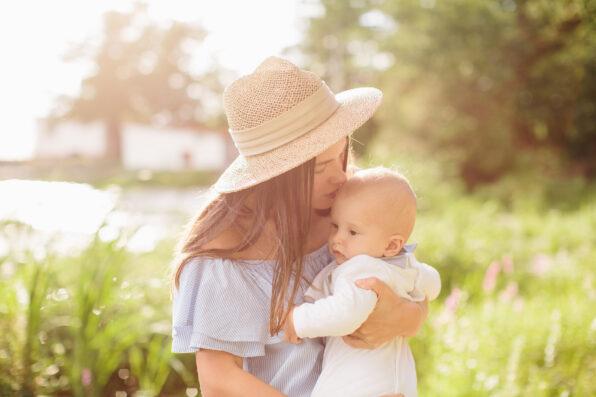The Weather Has Been Awfully Hot Lately, And Here’s How To Tell If Your Baby Is Overheating

The weather has been awfully hot as of late, and it’s not just because it’s currently summer. July 2023 has broken global temperature records and is set to be the world’s warmest month ever.
Places like Arizona and California have been experiencing wicked heat waves that have caused many individuals to be hospitalized and, sadly, even some deaths.
As the planet’s temperatures continue to climb due to climate change, it’s more important than ever that we learn how to stay safe when extreme heat threatens.
This especially pertains to babies. In comparison to adults, babies are unable to regulate their body temperature as efficiently, so when you’re outside in the summer sun, watch your little one carefully.
Overheating isn’t just uncomfortable for your child. It can lead to serious problems, such as dehydration, heat stroke, and other concerns like heat rash. It can also heighten the risk of sudden infant death syndrome (SIDS). Here’s how to spot signs of overheating and how to make sure your baby stays cool.
Since babies can’t verbally express their discomfort, parents must figure out their baby’s needs through close observation of their mannerisms.
Some telltale signs of overheating include feeling hot to the touch, looking flushed, sweat/damp hair, acting fussy, seeming unusually tired or weak, an elevated heart rate, nausea, and vomiting.
Being able to tell if your baby is overheating is tricky. Just because your baby isn’t sweating doesn’t mean they aren’t overheated. Generally, young infants may not sweat much, so they may be overly hot even without appearing to sweat.
The symptoms of overheating can also overlap with a fever. Additionally, you might not be too worried if your child feels hot if you’re outdoors.

Pavel Morozov – stock.adobe.com – illustrative purposes only, not the actual people
The average temperature for a baby is 97.5 degrees Fahrenheit, although this may fluctuate depending on what they’re wearing, the time of day, and how you take their temperature.
If your baby has a temperature of 100.4 degrees Fahrenheit or above, that is considered a fever and is a cause for concern in children under three months old. Fevers are entirely different from overheating, but both do bring on an increase in temperature.
In hot weather, it can be a challenge to maintain ideal temperatures for your baby. During the summer months, try to get baby’s room below 75 degrees. You can use an oscillating fan and close the curtains to keep the heat at bay.
Dress your child in fewer layers, and avoid placing them in direct sunlight. If needed, give your baby a bath in lukewarm water or place a cool, damp washcloth on their skin.
If your home does not have air conditioning, take breaks from the heat by visiting libraries or stores around your area. Lastly, never leave your baby alone in your vehicle, even for just a few minutes. Warm outdoor temperatures feel hotter when you’re inside a car and can lead to heat stroke or death.
Whenever you’re unsure about signs of overheating, it’s best to call your baby’s doctor right away!
If true crime defines your free time, this is for you: join Chip Chick’s True Crime Tribe
Here’s How You Can Create A Hummingbird-Friendly Garden
Sign up for Chip Chick’s newsletter and get stories like this delivered to your inbox.
More About:Parenting





